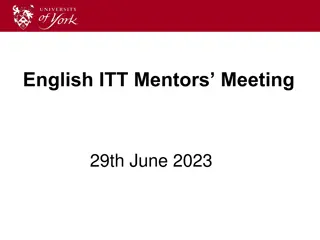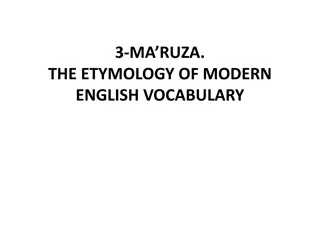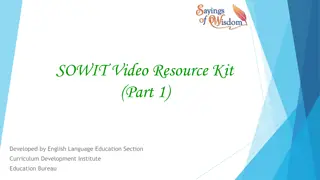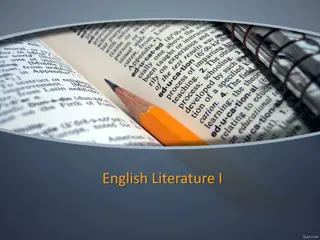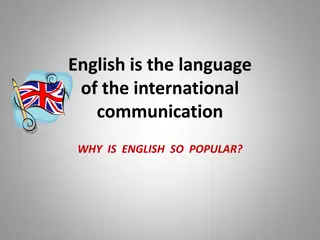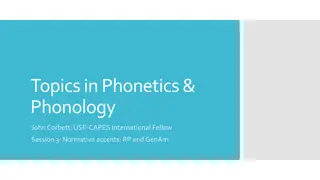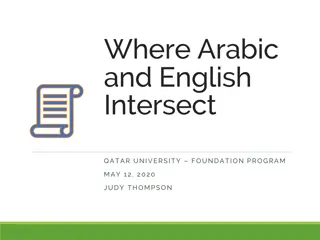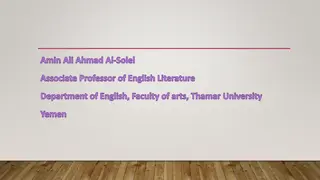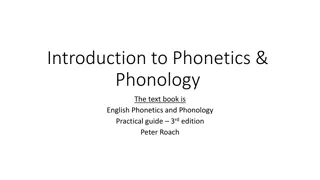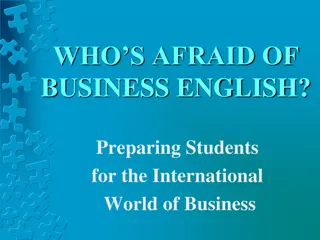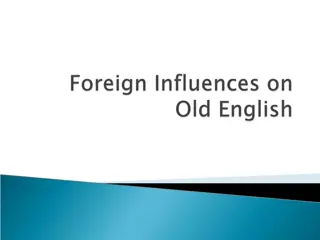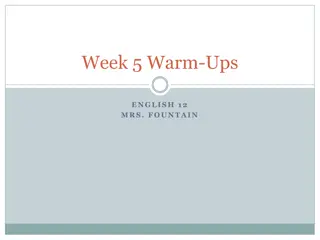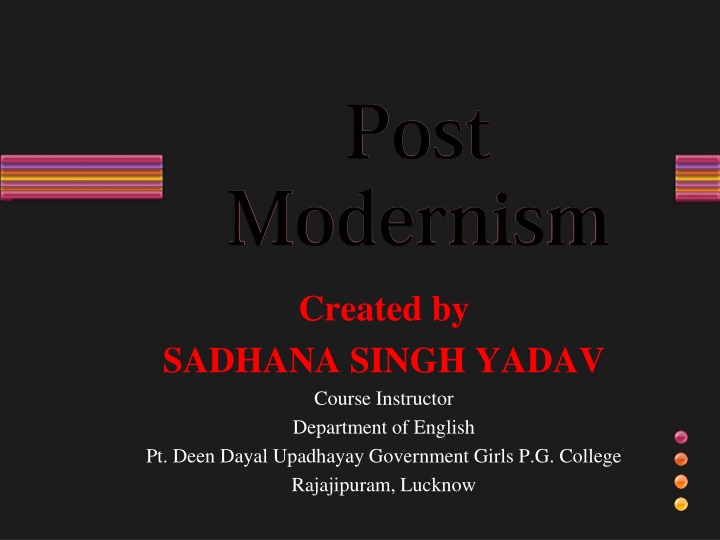
Modernism and Postmodernism in Arts and Literature
Exploring the transition from modernism to postmodernism in arts and literature, this content delves into the key concepts, styles, and movements that shaped these eras. From a general distrust of grand theories in postmodernism to the rational, logical nature of knowledge in modernism, the evolution of artistic expression is vividly depicted. Discover the origins of postmodernism, characterized by playful illusion and rejection of established modernist principles, in contrast to the objective and theoretical approach of modernism.
Download Presentation

Please find below an Image/Link to download the presentation.
The content on the website is provided AS IS for your information and personal use only. It may not be sold, licensed, or shared on other websites without obtaining consent from the author. If you encounter any issues during the download, it is possible that the publisher has removed the file from their server.
You are allowed to download the files provided on this website for personal or commercial use, subject to the condition that they are used lawfully. All files are the property of their respective owners.
The content on the website is provided AS IS for your information and personal use only. It may not be sold, licensed, or shared on other websites without obtaining consent from the author.
E N D
Presentation Transcript
Created by SADHANA SINGH YADAV Course Instructor Department of English Pt. Deen Dayal Upadhayay Government Girls P.G. College Rajajipuram, Lucknow
a late 20th century style and concepts in the arts, architecture and criticism that represents a departure from modernism and has its heart a general distrust of grand theories and ideologies as well as a problematical relationship with any notion of art
Postmodernism means a number of trends or movements in the arts and literature developing in the 1970s in reaction to or rejection of the dogma principles or practices of established modernism, especially a movement in architecture and influence of the International Style and encouraging the use of elements from historical informal styles and often playful illusion, decoration and complexity.
The term was first used around the 1870s in various areas. For example, John Watkins Chapman avowed a Postmodern style of painting to get beyond French Impressionism. Then J. M. Thompson, in his 1914s article in The Hibbert Journal used the term Postmodernism to describe changes in attitudes and beliefs in the critique of religion. The term was then applied to a whole host of movements, many is art, music and literature, that reacted against a range of tendencies in the imperialist phase of capitalism called modernism , and are typically marked by revival of historical elements and techniques.
Postmodern literature is literature characterized by heavy reliance on techniques like fragmentation, paradox and questionable narrators, and is often defined as a style or trend which emerged in the post World War II era. Postmodern works are seen as a reaction against Enlightenment thinking and Modernist approaches to literature.
MODERNISM POST-MODERNISM . Began in the 1890 until 1945. Modernism was based on using rational, logical means to gain knowledge. It was characterized by a hierarchical and organized and determinate nature of knowledge. Modernist approach was objective, theoretical and analytic. Postmodernism . Began after world War II. Postmodernism denied the application of logical thinking. It was based on an anarchical, non-totalized and indeterminate state of knowledge. Postmodernism approach was based on subjectivity.
Catch 22 Joseph Heller
Lost In The Funhouse John Barth
The Things They Carried Tim O Brien
White Noise Don Delillo
Kurt Vonnegut Slaughter House-5


